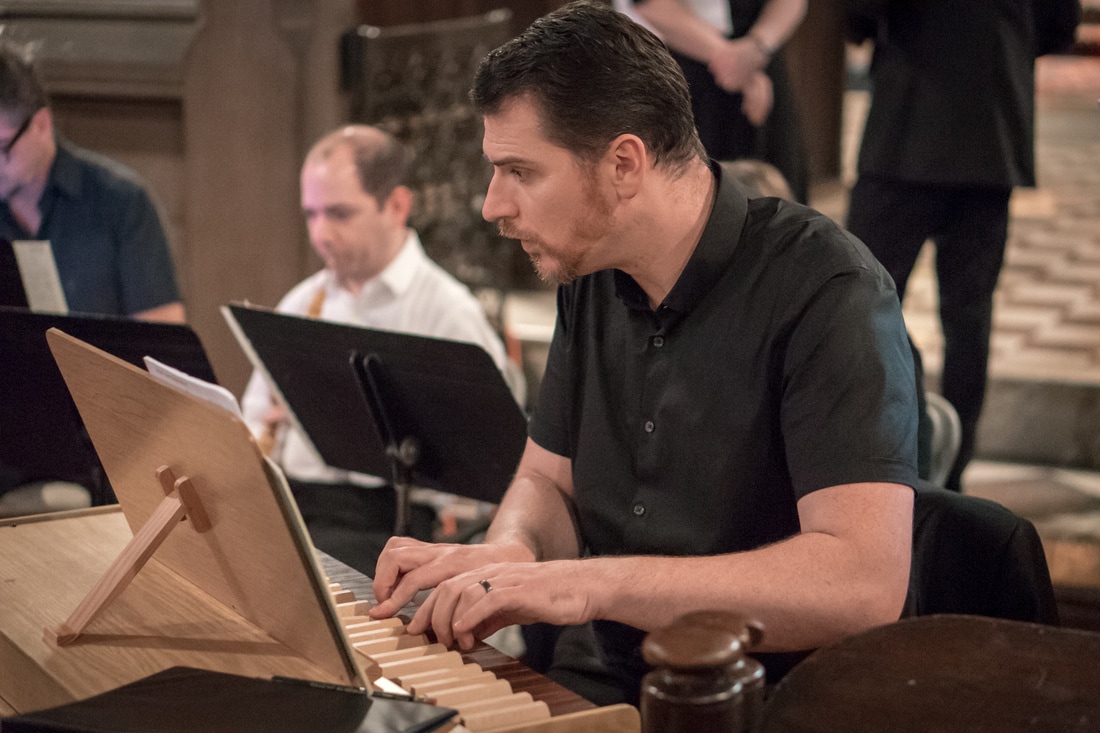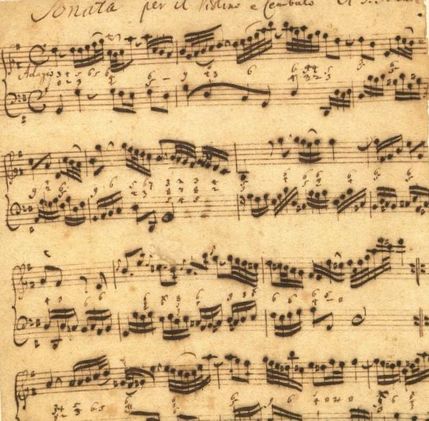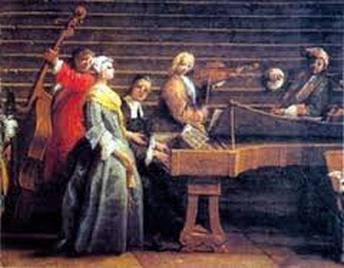 By Leon Schelhase For all musicians J.S. Bach and the keyboard are synonymous. Bach’s genius and vision have long stood as a test to every performer in a showcase of sensitivity, knowledge and musical command. The instruments he wrote for were nothing like the modern piano, and although it is common knowledge, we still have few players and audiences that are masters of Bach’s keyboard instruments. The organ aside, the harpsichord and clavichord are only now being regarded as equals to the piano. Of course, when we think of Bach’s keyboard music we are referring to great pieces of music for a solo keyboard instrument. The “Goldbergs”, the “48”, “Brandenburg 5” or the “Partitias” come to mind. However, the keyboard in Bach’s time most typically served the music in a different manner, that of accompaniment. Generally speaking, the term accompaniment in the Baroque era refers to a method of playing along with other instruments to enhance and make harmonic sense of their part. History shows us manuals where the organ would be instructed to fill in the voices of a polyphonic vocal piece if any of them are missing. And as history would have it, this “filling in” of voices becomes more and more formalized over time and we end up with a system known as ‘figured bass’ or ‘basso continuo’. In brief summation, the system works on the concept of adding notes above the bass, or whatever voice is lowest (basso seguente), that are in harmonic conjunction with the other non-keyboard notes. This is done by either reading the full score, or, the preferred manner of reading, from a bass-line which has added numbers above or below. These numbers range from 2 – 9 and are affected by accidentals to boot. Below is an example of the way it looks in print:  J.S. Bach: Sonata for Violin and Basso Continuo BWV 1021 J.S. Bach: Sonata for Violin and Basso Continuo BWV 1021 Many treatises exist explaining the “solutions” to the figured bass, and their rules still apply to this day. Note that there is no written right hand part. The numbers inform the player what to play. J.S. Bach was part of a musical culture where this method of composing and utilitarian notation was commonplace, and we see it in his scores throughout his career. It is important to make a distinction between two terms, “obbligato” and “continuo”. Obbligato differs from continuo in that the accompaniment is fully written out by the composer. Examples include Bach’s Sonatas for Viola da Gamba and Harpsichord, or Rameau’s Pieces de clavecin en concert. Continuo refers to the above-mentioned system of improvising accompaniment on a figured bass. The definition for continuo does not end there, however. “Continuo” has come to mean a collection of instruments ranging from keyboards, lutes, harps and guitars. It also refers to the single-line instruments in the bass family, the cello, double bass or violone, viola da gamba and bassoon. These instruments all play the same line of music and bring a sense of foundation and rhythmic precision from the bass up -- a fundamental compositional element of Baroque music. In the images below you can see a keyboard central to the orchestra and the double-bass or cello leaning over the keyboardist’s shoulder to read from the same music. From iconography like this, we get a sense that today’s audiences would be confused by the musicians arranged as such. We have been conditioned to sit in auditoriums with stages and have the performance happen in one direction, as opposed to the social interaction around the musicians, just as other musicians are gathered around the keyboard. Fascinatingly, in the music of J.S. Bach we see the line becoming blurred between the role of continuo and obbligato. Most famous of all is the 5th Brandenburg Concerto, where the harpsichordist shifts from section player to soloist and even has a dazzling cadenza. This was unconventional at the time! In the later cantatas we see the organ, or cello, or even the lute step out of the orchestra and become the focal point with the singer - roles usually reserved for the violin or solo oboe. Importantly, there are also entire arias that are solely accompanied by the continuo section. These ‘continuo arias’ exist with merely two lines of music, the singer’s line and the bass line. The instrumentation for these arias could span the gamut from a singer and keyboard player, to a singer and as many as seven other continuo instruments. Although it is worth mentioning that most of the recitatives are accompanied by continuo alone. The sound of harpsichord or organ continuo is a defining feature of Baroque music and, due to the harmonic back-drop it provides, the absence of it leaves us unsatisfied and perhaps confused. Strangely, the most notable continuo is that which one barely notices, due to the performer’s artful dodging of the limelight; an exercise in bringing the soloist’s part to light. As a final thought, the seemingly unimportant role of the continuo has proven time and again, that behind every good soloist is an excellent accompanist. about the AuthorA native of Cape Town, South Africa, Leon Schelhase (on photo above, by Sharon Torello) found himself resonating with Baroque music from an early age. His musical studies brought him to the harpsichord early on, and subsequently landed him in the United States where he has rapidly become sought after as both soloist and continuo performer. A recipient of the American Bach Soloists’ prestigious Goldberg Prize, Leon has performed with numerous ensembles including Emmanuel Music, American Bach Soloists, REBEL, New York State Baroque, and appeared with notable figures like Elizabeth Wallfisch, Julie Andrijeski and Julianne Baird. Leon holds a BMus (Hons) from the University of Cape Town, and a Master’s Degree in Historical Performance from Boston University He currently resides in Philadelphia where he has joined the faculty of the Curtis Institute of Music.
5 Comments
9/30/2019 11:08:58 am
This batch has meant a lot to me. I used to be the rookie on the team, but now, I am the one who is leaving. It is hard for me to leave since I have been here for so long, but this is what I need to do. I have a lot of responsibilities and I really need a job that can pay me well. I want to stay longer, but I think that this is the last of us.
Reply
3/17/2020 02:22:35 am
This boat hull has higher stability due to the fact that of its wide beam, frequently use two hulls for included stability and for simpler traveling through the water
Reply
2/22/2022 09:21:38 am
This is a very informative—edifying article to all. Thanks a lot! Continue to post!
Reply
Leave a Reply. |


 RSS Feed
RSS Feed